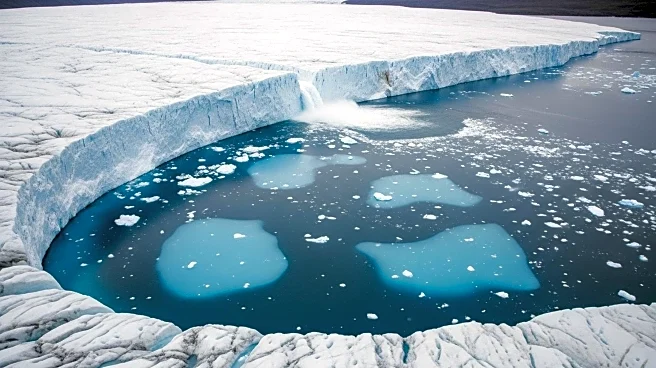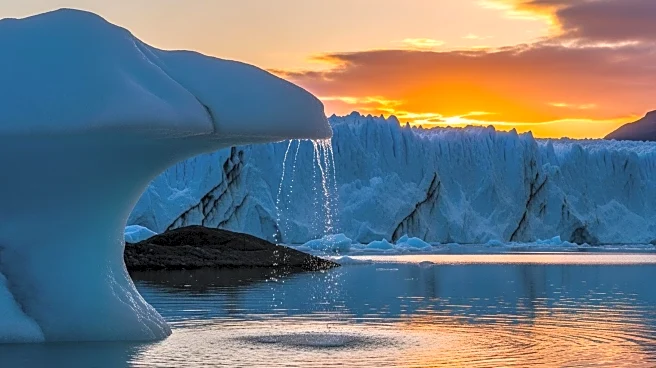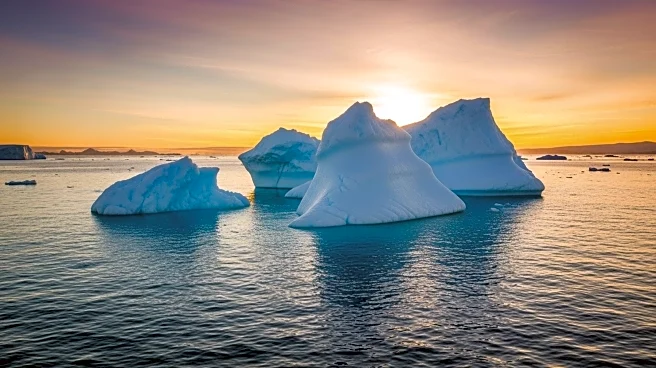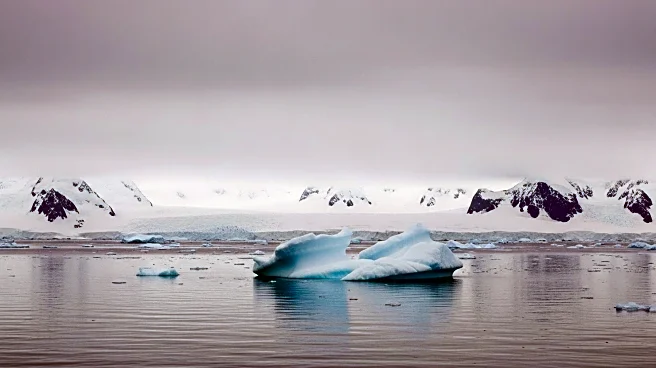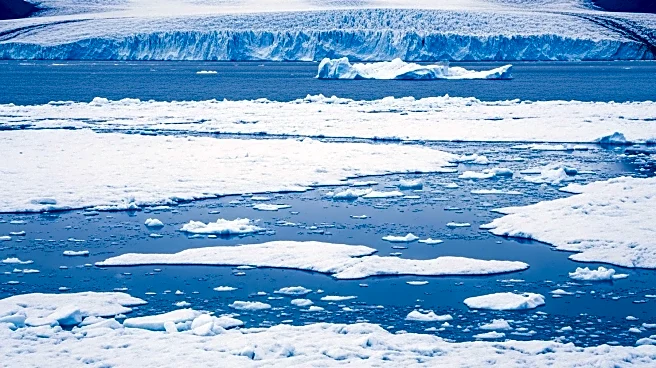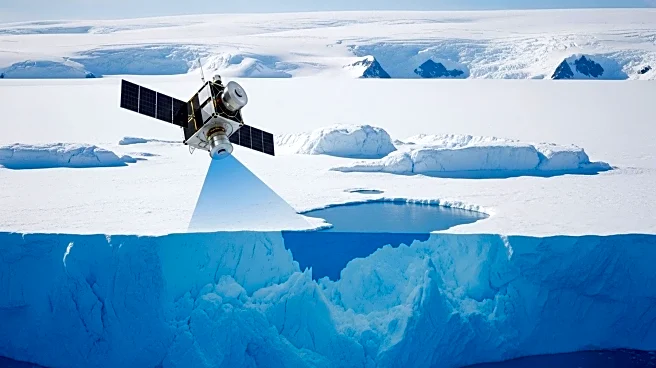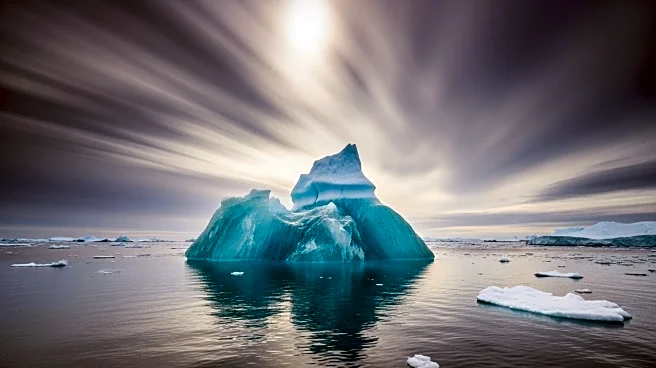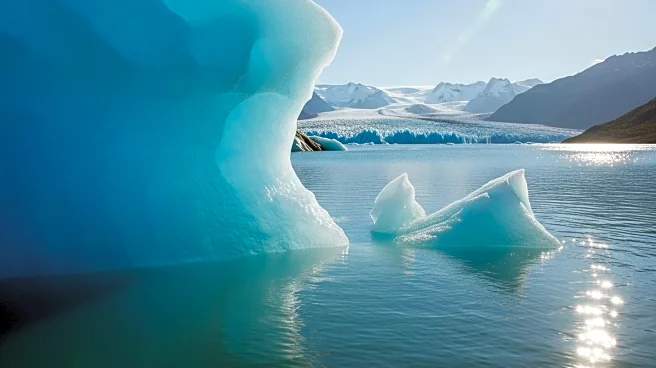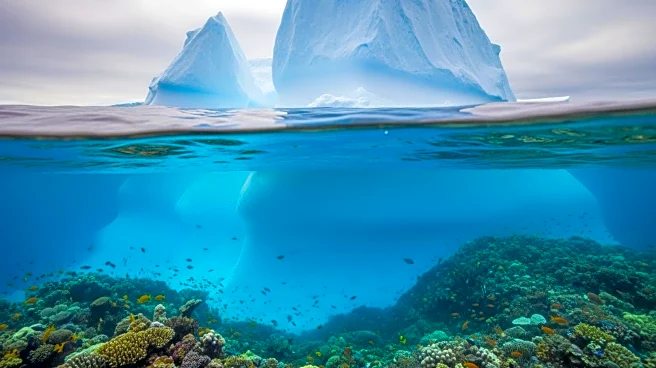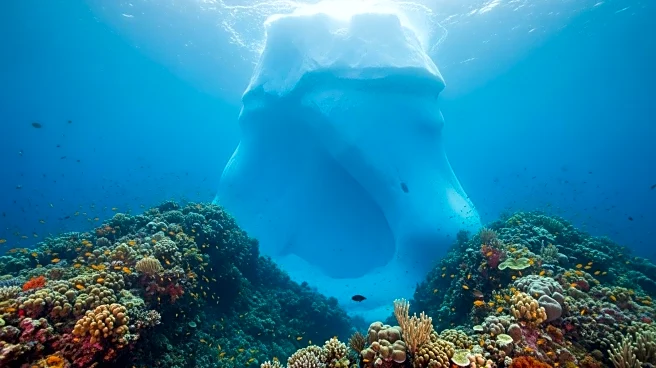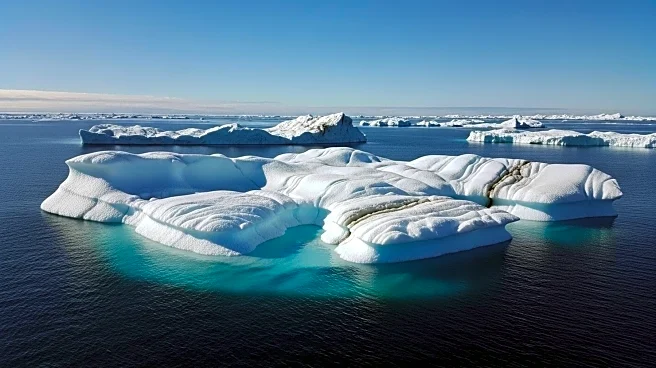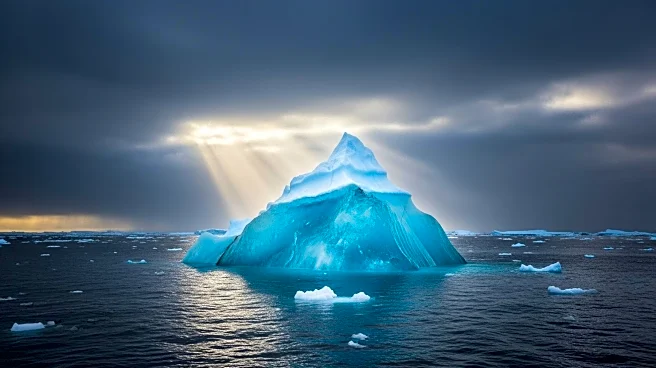What is the story about?
What's Happening?
Recent satellite technology has uncovered the existence of subglacial lakes beneath Antarctica, which are influencing glacier movements and contributing to rising sea levels. These lakes, previously a hypothesis, have been confirmed by satellites like CryoSat-2, which detect surface variations. The lakes are part of interconnected hydrological networks that affect glacier dynamics. When these lakes drain, they act as lubricants, accelerating glacier flow towards the ocean. This discovery challenges the perception of Antarctica as a static continent, revealing a dynamic landscape where these lakes play a crucial role in the melting of glaciers.
Why It's Important?
The existence of subglacial lakes has significant implications for global sea levels. The sudden drainage of these lakes reduces friction between ice and the rocky bed, allowing glaciers to slide more rapidly towards the ocean. This acceleration can increase by 10 percent, with effects lasting over a year, posing a substantial threat to coastal communities worldwide. Accurate climate models must incorporate these dynamics to predict sea level rise effectively. Understanding these hidden systems is crucial for developing strategies to mitigate the impacts of climate change on global coastlines.
What's Next?
The discovery of these subglacial lakes necessitates the development of comprehensive climate models that include their effects. Researchers must continue to study these hidden waterways to better predict and mitigate the risks to coastal communities. As the understanding of Antarctica's dynamic landscape evolves, strategies for addressing climate change and its impacts on sea levels will need to be updated accordingly.
Beyond the Headlines
The revelation of Antarctica's subglacial lakes highlights the complexity of Earth's climate systems. These lakes, akin to a theater's backstage, are invisible forces influencing ocean levels. Their study not only advances scientific knowledge but also underscores the urgency of addressing climate change. The dynamic nature of these lakes challenges previous assumptions about Antarctica and emphasizes the need for innovative approaches to climate modeling and policy-making.
AI Generated Content
Do you find this article useful?
